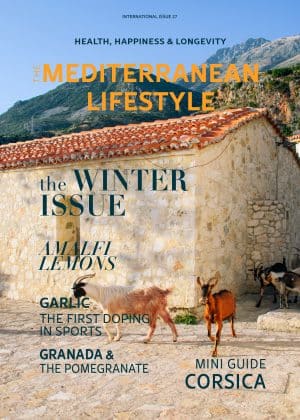PROSECCO HAS BECOME THE EXPRESSION OF ITALIAN SPARKLING WINE
What is called Prosecco is strictly regulated. It got its name from the once small town of Prosecco near Trieste. Today Prosecco is a clearly defined area of 6,100 hectares of vineyards in Veneto and Friuli-Venezia Giulia which lies between the Dolomites and the Adriatic Sea. Only the wines that have been grown, processed and bottled in this area are allowed to use the Prosecco DOC designation. In order to meet the high demand, the area was expanded to include the villages of Valdobbiadene and Conegliano and made a DOCG.
Real Prosecco is mainly made from the Glera grape, which was formerly known as Prosecco grape and has proven to be perfect for sparkling wine production. These in turn may only come from certain Italian provinces, including Treviso, Veneto, Trieste, Udine, Belluno and Padova. Only 15% of the volume can also be obtained from other grape varieties such as Pinot Grigio, Pinot nero, Pinot bianco, Perera, Bianchetta, Chardonnay and Verdiso. The naturally higher acid content gives Prosecco its characteristic freshness.

The fruit aromas such as green apple, pear and white flowers emphasize the floral and delicately fruity note. More than 600 million bottles of Prosecco are produced annually, around 70 percent of which are exported. The majority is produced as a simple DOC Prosecco, which can be frizzante (less than 3 bar pressure) or sparkling wine (more than 3 bar pressure). Italy also has a long tradition of fine sparkling wines that are made in classic bottle fermentation, but only four percent are made using the Metodo Classico.
In contrast to cava and champagne, Prosecco is generally made in a bulk method called Charmat, named after the French oenologist Eugène Charmat who invented the pressure-resistant large containers in which the second fermenation takes place. In the first step, grape juices are blended and fermented to form a base wine which is called Prosecco tranquillo. Then, during the second fermentation, the process differs. This does not take place in the bottle, but in the stainless steel tank.
Thanks to the closed container, the resulting carbon dioxide remains in the tank and creates a wonderfully light, sparkling wine. At this point the cellar master can decide whether he wants a gently tingling frizzante with a minimum alcohol content of 10.50% or a full sparkling wine with a minimum alcohol content of 11%. As a rule, sparkling wine in a Prosecco takes at least 30 days. Once the desired pressure has been reached, the yeast is removed. Then the sparkling wine is filled into glass bottles according to its taste nuance with or without dosage (a mix of wine and sugar). Longer contact with the yeast, as is the case with champagne, is not desirable, as the resulting bread aromas would overlay the typical floral fruit aromas.
Wines made using this Charmat method are designed to be drunk young. You can find sparkling wines available for sale that vary from dry, extra dry, brut and extra brut: They are faster and cheaper to produce without minimum aging requirements and are therefore often the cheapest of the three sparkling wines and now sold in greater quantity than champagne and cava around the world. Prosecco goes well with salty and fruity foods, such as ham with melon or cheese. Extra Brut or Brut goes very well with grilled chicken and, thanks to its lively acidity, is also the perfect addition to fish dishes.

PROSECCO D.O.C. FRIZZANTE
Prosecco doesn’t have to be a sparkling wine. It can also be “frizzante” or quiet. During the second fermentation, less sugar solution and less sparkling wine yeast are added so that it tingles less. With a floral bouquet and juicy stone fruit aromas with a minimum alcohol content of 10.50%, Frizzante wines stay below 2.5 bar atmosphere/pressure.
In addition to the label, the Prosecco Frizzante can be recognized by the fact that it has a short cork, which is usually attached to the neck of the bottle with a string. Then, during the second fermentation, the process differs. This does not take place in the bottle, but in the stainless steel tank.
PROSECCO D.O.C. SPUMANTE
The part of the name “Spumante” in these Italian sparkling wines is the Italian word for “foaming”. Often the name still includes the growing area, as is the case with the well-known Asti Spumante DOCG, which is produced in large quantities. Originally, sparkling wine was made using the traditional bottle fermentation method. The second fermentation stage can now take place in the tank instead of in the bottle.
Spumante wines have at least 3.5 bar, similar to the pressure of champagne or cava, and they foam accordingly. The sparkling wine impresses above all with the tingling experience of fruity, juicy, ripe apples, fragrant roses or tropical fruits such as banana and at the same time fresh to taste. For this reason, the typical mushroom-shaped champagne cork is used as with champagne and secured by a wire basket.
This article was first published in Issue 15








